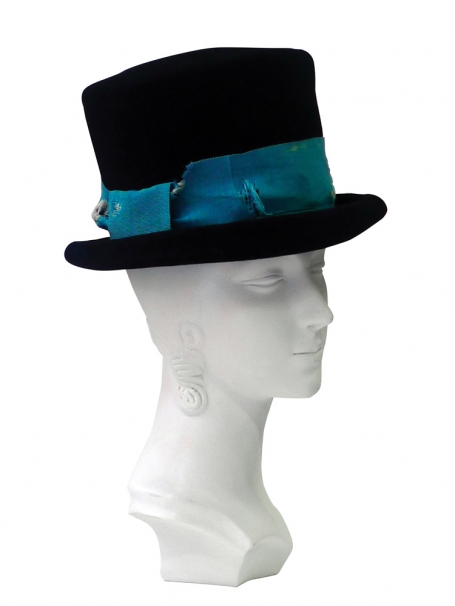
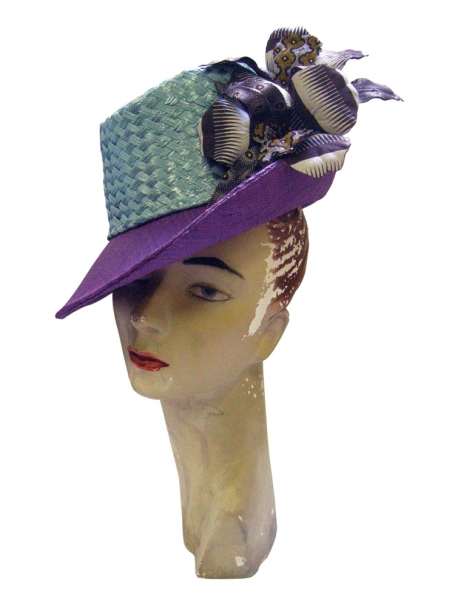
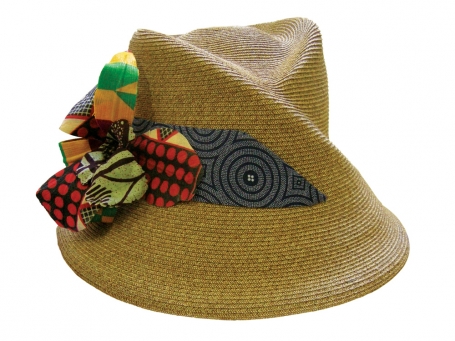
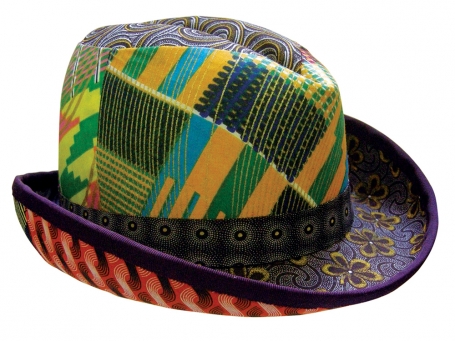
Albertus Swanepoel's life as a milliner has drawn upon destiny.
While vacationing in Paris in 1989, he had his portrait silhouette done by a street artist.
Swanepoel, at 30, was a successful fashion designer living in his native South Africa. The resulting paper cutout-to his surprise-included a swooping top hat he had not been wearing.
The artist must have been a soothsayer, because three years later Swanepoel enrolled at the Fashion Institute of Technology to study millinery.
Now Swanepoel is best known for striking classic fedoras, reinvented with creative embellishments such as the grosgrain ribbons he hand-distresses to look old and worn. "You don't want something alarming close to your face," he says. "My hats are cozy and comfortable and give you a little personality."
A hat also pulls together a look and says a lot about the wearer. "It's the orphan accessory, because it hasn't gotten as much attention as the bag or the shoe before, but a hat is a dot on the ‘i' - it makes the statement and finishes the outfit."
Millinery was by no means Swanepoel's first choice of career. For seven years, he had been a critically acclaimed fashion designer with his own label, Quartus Manna, in Johannesburg. He moved to New York in 1989, but was soon out of a job when his employer went under.
He found a gig with a glove designer, but it was just a winter business. Swanepoel had always been drawn to hats and made them on his own, but didn't know the craft well enough to make a living at it. That's when he decided to go to FIT. "It was a matter of survival in the beginning," he says.
As he learned how to mold felts on hat blocks and shape and trim the rims, he fell for hat making. And it was easier and more affordable to start small with a hat collection than with a clothing line. So he trained with Janine Galimard, who worked for Balenciaga in the 1950s and '60s, and he assisted hat designer Lola and theatrical milliner Lynne Mackey.
In 2004, a stylist wandered into Phare, a now-defunct shop where Swanepoel worked, looking for someone to make turbans for New York fashion label Proenza Schouler. She enlisted Swanepoel. He went on to collaborate with Carolina Herrera, Tommy Hilfiger, Alexander Wang and Diane von Furstenberg on their runway collections. He established his namesake label in 2006, with the paper cutout from Paris as his logo hanging on his studio door.
In 2008, Swanepoel was a runner-up for the prestigious Council of Fashion Designers of America CFDA/Vogue Fashion Fund, a $50,000 award to help emerging designers; it's a moment he considers his highest achievement. His line is sold in Barneys shops nationwide, and he has recently designed a few hats for the masses with Gap,
J. Crew and Stetson.
Despite these mainstream successes, he still considers himself a craftsman above all else. "Making things with my hands is important to me-it's very rewarding to start with nothing and create something after a day or two," he said. "It's an old craft that I have to respect and make modern."
Sara Glassman is a fashion writer in Minneapolis.
http://albertusswanepoel.com


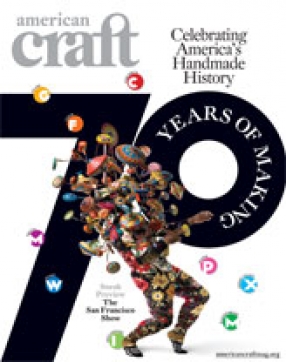



Post Your Comment
Fields in bold are required. Your email address is required but not published. Please enter the five digit code as it appears in the text field on its right.